Physical Address
304 North Cardinal St.
Dorchester Center, MA 02124
Physical Address
304 North Cardinal St.
Dorchester Center, MA 02124
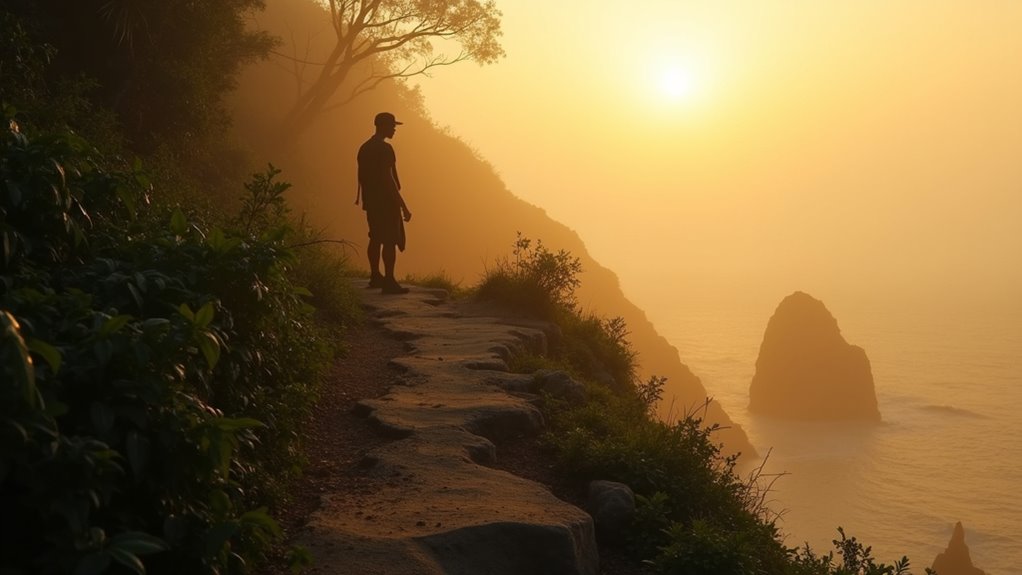
Looking at Asia's most dangerous places reveals shocking truths about cities where danger lurks around every corner.
Asia’s most dangerous places include Damascus (Syria) with ongoing bombardment, Afghanistan under Taliban rule, Yemen’s conflict zones, and Myanmar’s coup-affected regions. Urban dangers exist in Manila and Karachi with high street crime, Dhaka’s extreme density poses health risks, while Quezon City and Northern Syria face violence and infrastructure collapse. Understanding these hotspots can help you make informed travel choices and recognize which areas demand extreme caution.
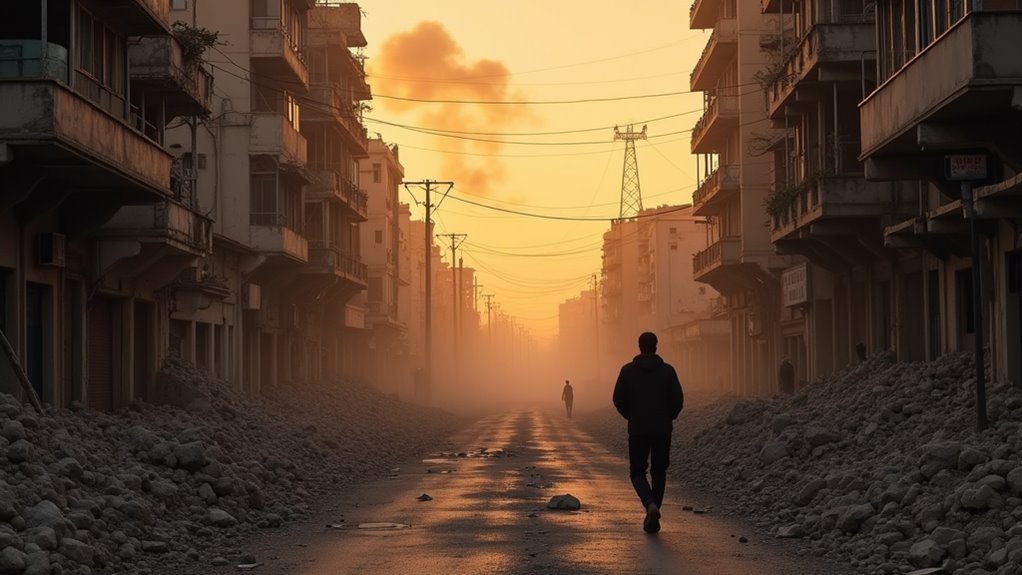
While Damascus once stood as Syria’s proud capital, it now represents one of Asia’s most perilous cities amid catastrophic civil war developments. Since Assad’s December 2024 flight to Moscow, the city has fallen into lawless disarray with competing militant factions.
You’ll face daily risks from indiscriminate attacks, with over 800 civilian deaths reported in March 2025 alone. The city has become a battleground for sectarian violence, with attacks primarily targeting civilians based on their religious identity. Israeli airstrikes regularly target Damascus airport, disrupting aid and escape routes. Critical services like electricity, water, and medical care have collapsed, while former government detainees roam freely following mass prison releases.
The city’s neighborhoods face constant bombardment, with Syrian Archive documenting 282 attacks across surrounding governorates in early 2025. Without centralized authority, HTS and SNA militants enforce their own brutal brand of control. Damascus stands as one of the most hazardous destinations in all of Asia for travelers and residents alike.
Damascus isn’t Asia’s only war-torn danger zone. Afghanistan presents a lethal landscape where Taliban control, ISIS-K insurgency, and frequent terrorist attacks create unpredictable dangers nationwide.
Afghanistan’s brutal reality combines Taliban rule, ISIS-K violence, and daily terror threats in a deadly national powder keg.
You’ll face extreme risks as checkpoints and roadblocks make transit unpredictable. Westerners, journalists, and aid workers are prime targets for kidnapping. Women and 2SLGBTQI+ individuals endure severe oppression under harsh morality laws.
The humanitarian crisis affects 24 million people, with 3.2 million children suffering acute malnutrition. Natural disasters compound these problems while border regions harbor armed groups and traffickers. Despite overall improved security allowing humanitarian access to previously inaccessible areas, ongoing crises are expected to persist into 2025.
Global travel advisories unanimously warn against all travel. There’s no consular support, airports and hotels face regular attacks, and medical evacuation is impossible. Unlike the island paradise destinations of Bali and the Philippines, Afghanistan offers no safe zones for travelers.
Afghanistan’s instability makes it one of Asia’s most dangerous places.
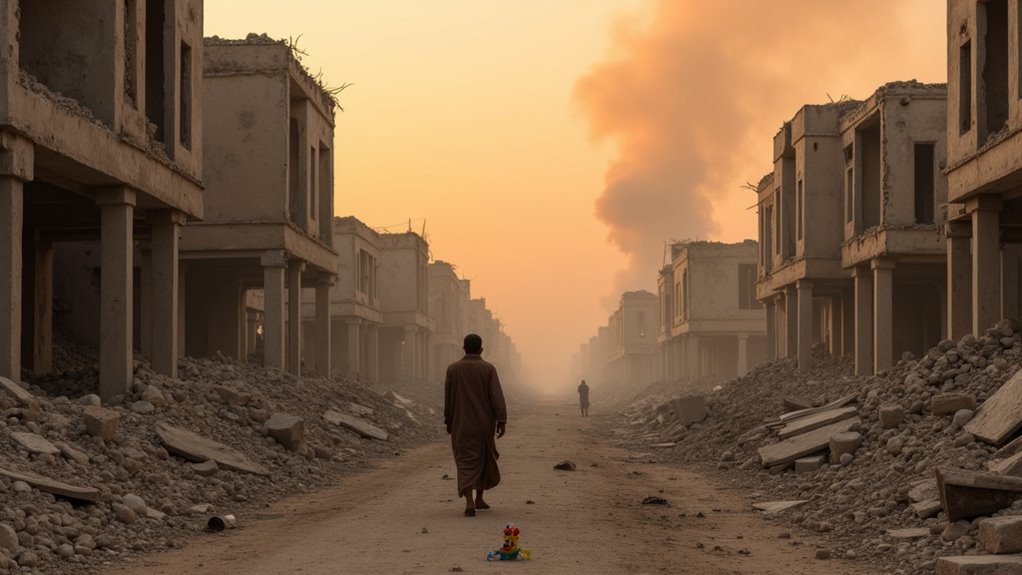
Since 2015, Yemen has devolved into one of Asia’s most perilous environments where multiple warring factions create extreme danger for civilians and travelers alike. Marib province faces intensified Houthi attacks in 2025, while Saudi-led airstrikes continue to claim thousands of civilian lives.
You’ll encounter multi-party clashes across northern and central regions with critical humanitarian shortages affecting nearly 20 million people. The healthcare system has collapsed, leaving millions of women without essential services. Recent AQAP attacks in southern provinces have further destabilized regions previously considered relatively secure.
The most dangerous areas include active combat zones in Marib, Houthi-controlled territories with restricted aid access, and frontline cities experiencing regular shelling. The conflict has completely transformed what was once considered among Asia’s destinations for natural beauty and outdoor exploration. International complicity has worsened the situation, with arms transfers enabling attacks on civilian infrastructure.
Displacement camps offer little protection from violence, while the Red Sea blockade has created widespread food insecurity.
Following the 2021 military coup, Myanmar has transformed into a fragmented battleground where your safety faces grave threats from multiple directions.
The military junta’s violent campaigns against resistance villages have created dangerous no-go zones, particularly in ethnic minority regions. Conflicts between the People’s Defense Force (PDF) and military forces can erupt suddenly in urban centers and rural areas alike. Cities like Yangon and Mandalay experience unpredictable protests met with lethal force. The plight of democratic leaders and advisors, including Sean Turnell’s imprisonment, exemplifies the regime’s brutal repression against perceived opponents.
Border regions with China, particularly those controlled by the MNDAA and other ethnic armed groups, remain especially volatile. The junta’s extended state of emergency means continued arbitrary detentions, military checkpoints, and civil unrest nationwide. Unlike neighboring Cambodia with its affordable travel costs, Myanmar faces economic devastation that compounds security risks for visitors.
If you’re considering travel to Myanmar, reconsider immediately—ongoing armed resistance, economic collapse, and widespread human rights abuses make nearly the entire country unsafe for foreigners.
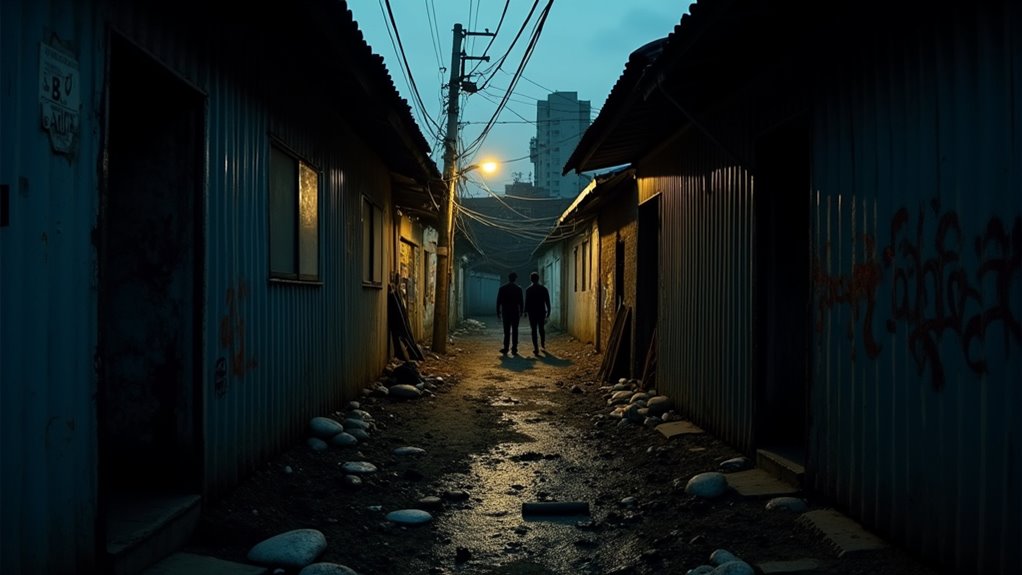
While Myanmar’s conflict zones represent political danger, Manila’s threats come primarily from criminal activity. Despite a significant 21% crime rate drop in early 2025 compared to 2024, certain districts remain problematic.
Manila’s criminal landscape shows improvement, yet travelers should remain vigilant in certain areas despite recent safety gains.
Tondo tops the list as Manila’s most notorious district, characterized by high poverty and crime rates. The Port Area continues its reputation for smuggling and organized crime activities. Recent statistics show Manila experienced an impressive 60% crime reduction during Holy Week 2025 compared to the previous year.
Blumentritt and Sampaloc experience higher crime incidents due to dense population and economic challenges, while Santa Cruz sees a mix of petty and serious offenses. Unlike Cambodia with its deadly wildlife threats, Manila’s dangers are almost exclusively human-made.
Increased police visibility and intelligence-driven operations have improved crime solution efficiency throughout the city.
If you’re visiting, exercise caution in these districts, particularly after dark. The good news: tourist areas like Intramuros generally maintain better safety records.
Karachi’s urban violence has evolved into a complex pattern of street crime despite recent statistical improvements. Despite a 28% decline from 2024, over 10,300 street crime incidents occurred in early 2025, with 19 fatalities by March.
You’ll want to avoid high-risk neighborhoods like PECHS, Sohrab Goth, Quaidabad, and Shah Latif Town, where fatal robberies have become increasingly common. The area around Jinnah Hospital has witnessed vigilante justice against criminals. January 2025 saw a 29.17% rise in car snatching incidents compared to December 2024.
Working-class professionals, shopkeepers, and motorcycle riders face the highest risk of becoming targets. Daily statistics reveal the scope of the problem: 48 mobile phones snatched, 5 cars stolen, and 125 motorcycles taken each day. In contrast to Karachi, many travelers find Southeast Asian countries like Thailand and Singapore significantly safer for tourism.
Weapon trafficking from neighboring provinces has fueled the rise in armed robberies across the city.
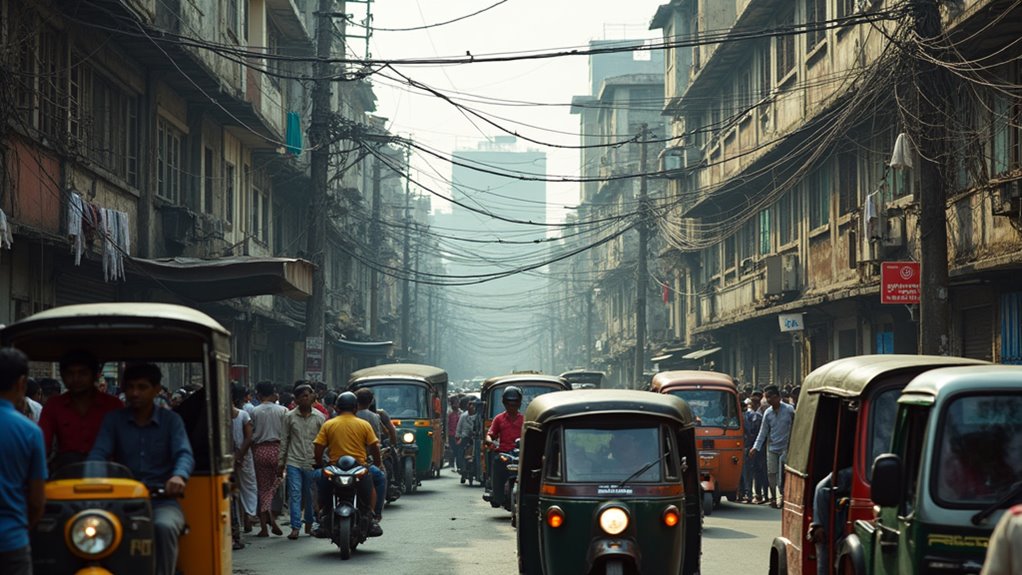
Unlike Karachi’s street crime challenges, Dhaka presents dangers of a different magnitude entirely. With a staggering density of 23,234 people per square kilometer, you’ll navigate one of the world’s most crowded urban environments. This extreme population concentration—growing 3% annually toward 24.6 million by 2025—creates unique hazards.
The city’s rapid expansion has outpaced infrastructure development, resulting in severe traffic congestion, widespread pollution, and inadequate waste management. You’ll face significant public health risks from contaminated water and poor air quality. The dramatic transformation from a population of just 335,760 in 1950 to today’s metropolis has created enormous strain on city resources and planning.
During monsoon season, Dhaka’s insufficient drainage systems leave many areas vulnerable to flooding.
Despite economic opportunities in this major hub, you’ll encounter stark income inequality. Traffic accidents occur frequently due to congested roads and limited safety measures, making daily commuting a considerable risk. If seeking a safer Asian destination, consider the island paradises of Indonesia or Philippines instead, which offer beautiful escapes from urban dangers.
When exploring Quezon City, you’ll find a metropolis grappling with a troubling crime index of 63.9—one of Asia’s highest. Despite this ranking, there’s been a 14.12% decrease in crime volume from October 2024 to February 2025.
Focus crimes include murder, theft, robbery, and rape—all showing significant reductions. Physical injury cases dropped by 52.50%, while rape incidents decreased by 36.21%. While concerning, Quezon City’s crime statistics are still considerably lower than the South African cities that dominate global crime rankings. For travelers seeking safer experiences, consider visiting Japan or Singapore instead, which rank among Asia’s safest destinations for solo travelers.
The city has made impressive strides in reducing violent crime, with physical injury and rape cases seeing dramatic double-digit decreases.
The city’s high crime rates stem from poverty, dense population, and limited job opportunities. Local authorities have responded with intensified policing in high-risk areas and technology integration like the e-warrant system.
If you’re visiting, stay vigilant in crowded neighborhoods. The collaboration between law enforcement and community initiatives has improved safety, but Quezon City remains a location requiring caution.
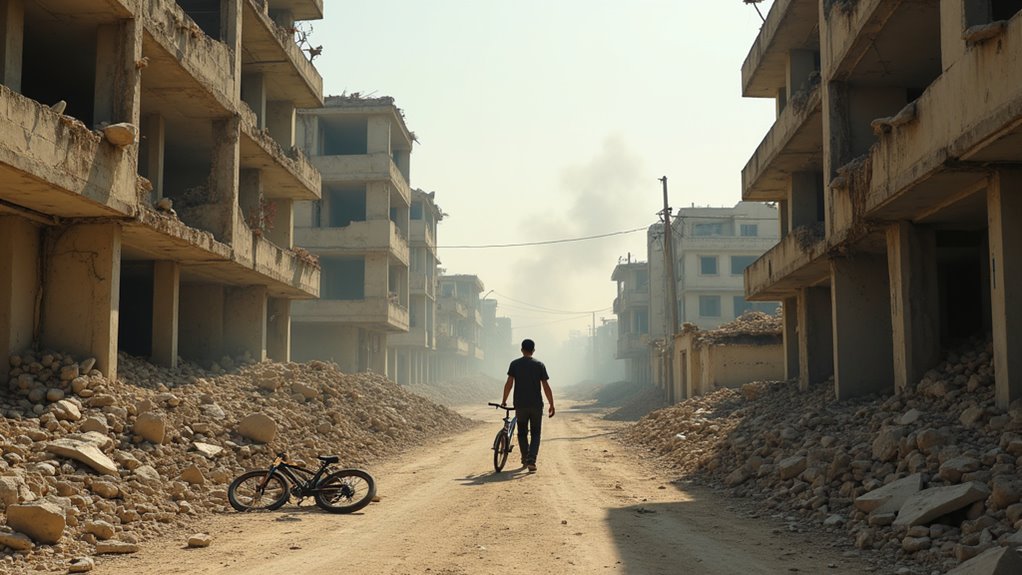
Northern Syria stands among Asia’s most volatile regions, where ongoing conflict has ravaged cities and displaced over 14 million people since 2011. If you’re considering travel to this region, understand that airstrikes and military operations continue to claim civilian lives across multiple cities.
The humanitarian situation remains dire, with 16.5 million people needing assistance. The February 2023 earthquake and its aftershocks have worsened existing hardships for vulnerable families along the Syria-Turkey border. Recent aid cuts have left hundreds of thousands without food, clean water, and healthcare. Cities like Idlib and areas of northern Aleppo face particularly desperate conditions.
Control varies throughout the region, with Kurdish forces, government troops, and various factions holding different territories.
Infrastructure lies in ruins, economies have collapsed, and extreme weather further threatens displaced populations living in inadequate shelters.
You’ll want to avoid these nine dangerous Asian hotspots during your travels. While some areas face political unrest and active warfare, others struggle with urban crime that can make even a short walk feel like traversing a minefield. Always research current safety conditions, register with your embassy when visiting higher-risk regions, and consider whether the experience justifies the potential dangers. Your safety should remain your top priority.